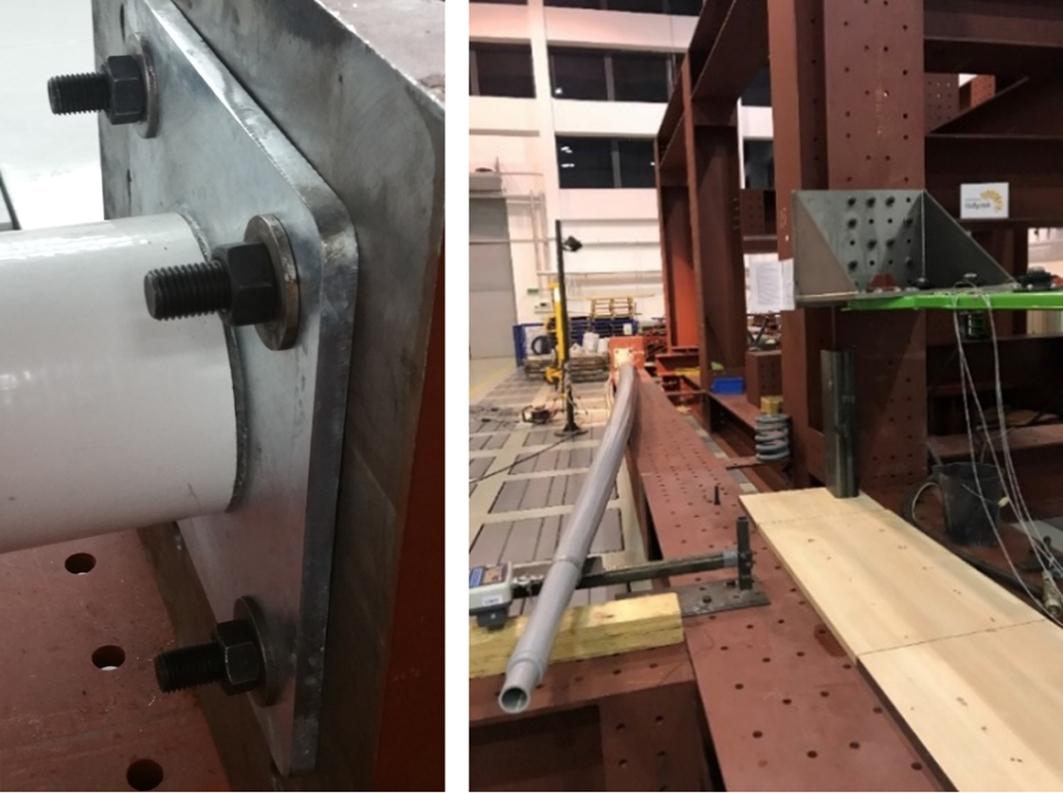Experimental and numerical verification of the standard procedure for determining the load capacity of GFRP composite lighting columns
1
Department of Civil Engineering and Environmental Sciences, Bialystok University of Technology, Poland
Submission date: 2023-10-28
Final revision date: 2024-01-05
Acceptance date: 2024-01-18
Publication date: 2025-03-20
Corresponding author
Elżbieta Broniewicz
Department of Civil Engineering and Environmental Sciences, Bialystok University of Technology, Wiejska 45a, 15-351, Bialystok, Poland
Department of Civil Engineering and Environmental Sciences, Bialystok University of Technology, Wiejska 45a, 15-351, Bialystok, Poland
Archives of Civil Engineering 2025;71(1):381-401
KEYWORDS
composite structuresFEM analysisexperimental investigationflexural behaviourdesign procedureGFRP lighting poles
TOPICS
ABSTRACT
The main objective of the research was to validate the method for determining the load capacity of GFRP composite lighting columns under horizontal loads according to the EN 40-3-3:2013 standard. The work involved developing a numerical model of GFRP composite columns with an inspection hole while accounting for the columns' nonlinear behaviour before the failure phase. The model was verified by testing 11 GFRP lighting columns on a natural scale and material testing of the composite. A calculation method was used in accordance with the standards EN 40-3-3:2013 and EN-40-7:2002 to determine their bending resistance. It was discovered that the load capacity estimated experimentally is two to three times less than the load capacity estimated using the standard's procedure. Also, the load capacity calculated based on the developed numerical model of the column is about 2.5 times lower than the characteristic load capacity calculated based on the currently applicable standard procedure. The analysis of the standard design procedure shows that the inspection opening is treated only as a local reduction of the cross-section, reducing the yield modulus. However, the possibility of buckling the walls in the inspection opening area is not taken into account. It means that the standard procedure for determining the bending resistance of composite columns has not been adapted to the actual behaviour of composite columns with inspection openings. Developed numerical model of a lighting pole with an unreinforced inspection opening accurately assesses the capacity of such poles for use in scientific and design practice.
Share
RELATED ARTICLE
We process personal data collected when visiting the website. The function of obtaining information about users and their behavior is carried out by voluntarily entered information in forms and saving cookies in end devices. Data, including cookies, are used to provide services, improve the user experience and to analyze the traffic in accordance with the Privacy policy. Data are also collected and processed by Google Analytics tool (more).
You can change cookies settings in your browser. Restricted use of cookies in the browser configuration may affect some functionalities of the website.
You can change cookies settings in your browser. Restricted use of cookies in the browser configuration may affect some functionalities of the website.




